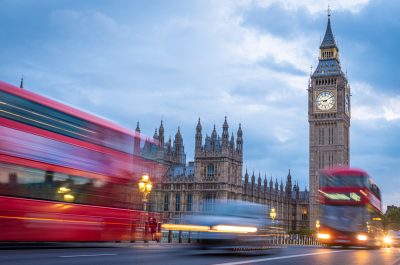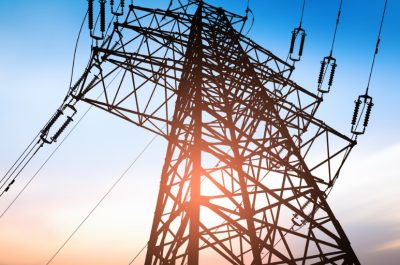COAG Energy Council – what to expect
The Council of Australian Governments (COAG) Energy Council (the Council) is meeting on Friday.
It’s the first and last meeting for the year and we expect the agenda is pretty packed.
With the Council last meeting in December 2018[i], there are many issues left in limbo.
Let’s take a look at what may be up for discussion and how it will affect the energy sector.
National hydrogen strategy
Reportedly, the National Hydrogen Strategy will be first up. It will surely be a hot topic and hopefully an area of strong consensus amongst the COAG participants.
Alan Finkel is set to give a presentation on Australia’s draft National Hydrogen Strategy and we hope it is publicly released after the meeting.
Several states have now developed hydrogen strategies, with the most recent ‘action plan’ released by the Tasmanian Government just this week.
Recent research by the Future Fuels CRC showed that there are 19 separate hydrogen roadmaps underway around the world.
Reliability Standard
This week we have seen the odd situation of the Victorian and Commonwealth Governments on a unity ticket on a subject, but still disagreeing over who ‘owns’ the issue. Both are calling for a review of the NEM Reliability Standard, with Victoria saying it has put it on the Council’s agenda.
The reliability standard was reviewed last year in a thorough, independent process that confirmed the current standard targeting 0.002% unserved energy demand. The target means that no more than 2MWh of outage is allowed per 100,000MWh of demand in any region each financial year.
This standard strikes a balance between reliability and customer cost. The tighter the standard, the higher customer bills will be.
Expectations of 100 per cent reliability are not realistic and would be prohibitively expensive.
Galloping down a path to higher reliability comes at a cost to customers and has a particularly painful history for networks in some states. Given this, Energy Networks Australia urges governments to proceed with caution, with any increase in reliability standards only occurring after the explicit impact on customer bills is identified and understood.
AER Board Appointments
The Australian Energy Regulator (AER) is expanding from three board members to five. Combined with the automatic slot for an ACCC representative (currently Christina Cifuentes) being removed as part of the changes, it appears there are up to three vacancies due to be filled by the Council.
With a new chair, Clare Savage, at the helm, this could mean the AER taking a whole new direction, or it could mean a similar course continues.
With such unprecedented change in the energy sector as we transition to a renewables future, it’s timely that circumstances have allowed for the renewal of the AER.
That’s not in any way a criticism of previous Board members, merely a recognition that change brings opportunity for fresh thinking.
There is a raft of regulatory changes required to support our rapidly evolving energy system. One thing all energy stakeholders can agree on is the current frameworks are not fit for purpose or flexible enough to keep step with the pace of change.
Networks aspire to an energy future where regulation is designed around customers’ long-term interests and supports the sustainable delivery of services in a distributed energy world. The composition of the new AER Board will be crucial to achieving this objective.
We look forward to an outcome from the Council about the successful candidates.
Review of ESB
The Energy Security Board (ESB) was established by the Council on 14 July 2017 to coordinate the implementation of the review by Chief Scientist, Dr Alan Finkel.[ii]
While the performance of the ESB Board is assessed annually by the Council, the Board and secretariat are due for an independent review in 2020 that will be provided to the Council.[iii]
So, what is the future of the ESB?
One would think the abolition of the ESB is unlikely given the political climate and the optics that would send – with system security concerns it’s hardly the best time to eliminate your energy security body.
The question is more likely what will the ESB’s role be going forward?
ESB Chair, Kerry Schott, has at times been critical of the Federal Government’s energy policy settings. It will be interesting to see which direction the Commonwealth may want the ESB to take.[iv]
The ESB’s unique position as a forced, adjudicated, meeting of the AER, Australian Energy Market Commission (AEMC) and the Australian Energy Market Operator (AEMO) does make a lot of sense. These three powerful bodies administering our energy system need to work cohesively together for everyone’s benefit.
Data and Smart Meters
The Council may discuss the work the ESB is doing on a data strategy, another recommendation of the Finkel review.[v]
Finkel highlighted the importance of data in our transforming energy system and the role it will play in security and reliability.
We’ve written previously about the importance of data, particularly in providing visibility of behind the meter batteries, so networks and AEMO can better manage a system made less stable by increasing levels of intermittent generation.
The further roll-out of smart meters will play an important role in increasing the data available to networks and AEMO to help manage the system.
The key will be ensuring we have frameworks that deliver real-world metering and data benefits for customers, not ones that only work if the assumption that most customers are engaged and active turns out to be true.
DER integration work plan
Distributed energy resources such as household batteries and solar PV present many challenges to our energy system but also great opportunities.
Though most of this electricity is clean and sustainable, it is mostly connected to a distribution network not designed for ‘two-way’ electricity flows.
The local grid limitations are creating bottlenecks and challenges with local grid stability in some networks.
Given the popularity of solar subsidy schemes in various jurisdictions, a DER integration plan will surely be a hot topic.
The rise of DER is also the focus of work underway by Energy Networks Australia and AEMO through the Open Energy Networks Project (OpEN). OpEN aims to optimise the integration of DER into the grid so customers and the entire system can benefit.
COGATI and ESB’s Post 2025 review
COAG will also consider the AEMC’s Coordination of Generation and Transmission Investment reforms (known as COGATI).
The AEMC considers that the Integrated System Plan (ISP) should be the central vehicle for transmission network planning, rather than generators driving planning via their investment decisions.
Networks support the view that the ISP, with extensive stakeholder engagement, will develop the least-cost total system plan and the preferred renewable energy zones.
Implementation of the reforms should be on a realistic timeframe that allows the new framework to be introduced in a manner that is pragmatic, workable and appropriately manages transition risks. The reforms must also provide a solid foundation for further development through the ESB’s post-2025 review. This review is likely to also be on the Council agenda.
References
[i] http://www.coagenergycouncil.gov.au/meetings
[ii] http://www.coagenergycouncil.gov.au/publications/establishment-energy-security-board-media-release
[iii] http://www.coagenergycouncil.gov.au/sites/prod.energycouncil/files/publications/documents/Energy%20Security%20Board%20ToR.pdf
[iv] https://www.afr.com/companies/energy/ill-advised-schott-chides-taylor-over-coal-20191008-p52ymt
[v] http://www.coagenergycouncil.gov.au/sites/prod.energycouncil/files/publications/documents/NEM%20Data%20Strategy%20-%20Public%20Consultation%20Paper%2020Mar2018.pdf


